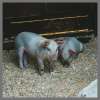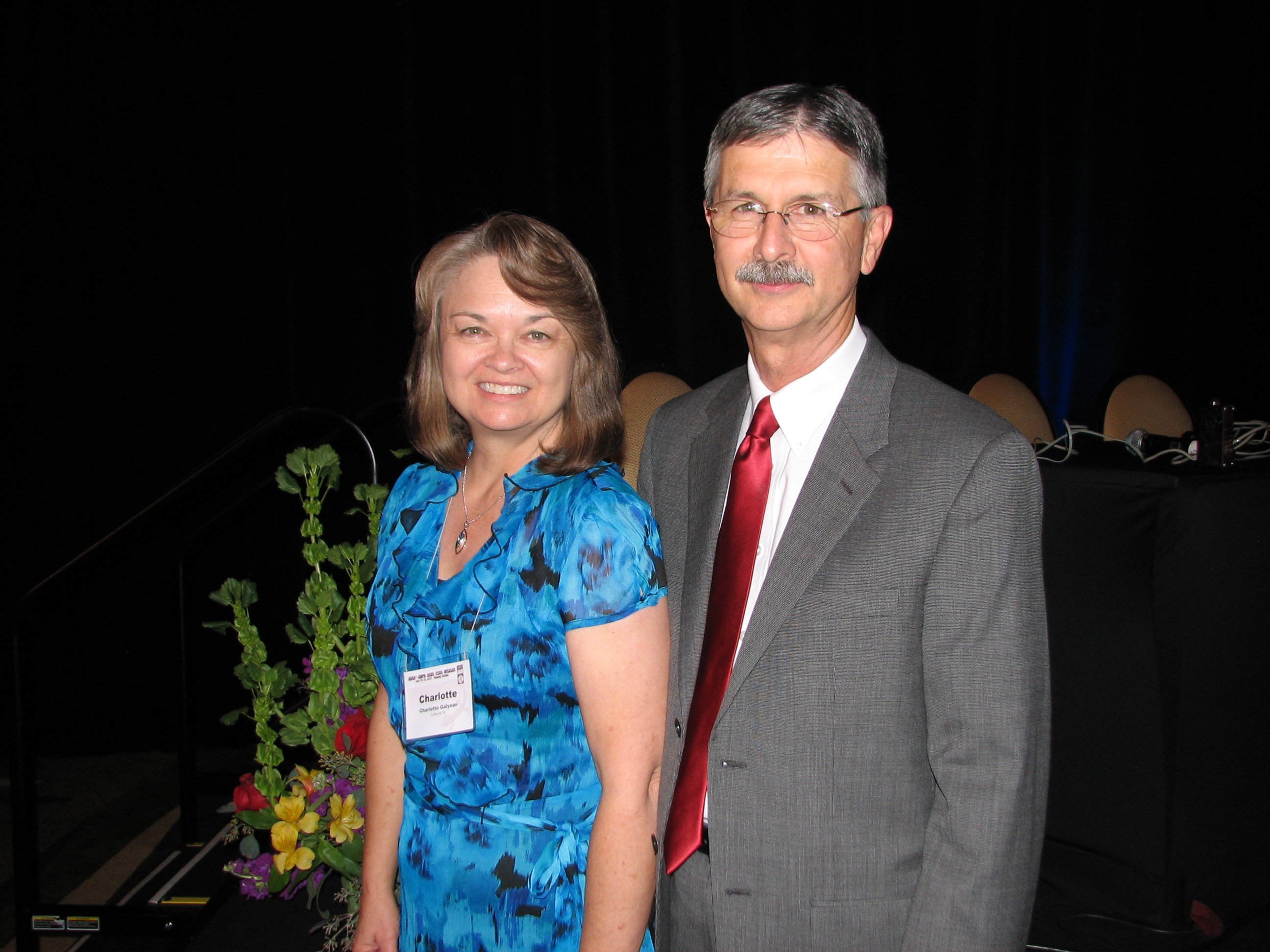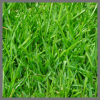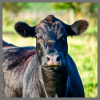-

May
02
Interpretive Summary: Effects of heating soybeans on postruminal amino acid bioavailability, performance, and ruminal fermentation in lactating cows
.png?sfvrsn=2b9457d1_1)
Soybeans contain antinutritional factors that may influence amino acid (AA) bioavailability to cattle. Holstein cows were used to evaluate if roasting whole soybeans influenced bioavailability of AA in diets containing soybeans.
Read more
-

May
02
Interpretive Summary: Temporal dynamics of genetic parameters and SNP effects for performance and disorder traits in poultry undergoing genomic selection
.png?sfvrsn=fd9457d1_1)
Genetic parameters are used to predict breeding values for individuals in breeding programs undergoing selection. However, inaccurate genetic parameters can cause breeding values to be biased, and genetic parameters can change over time due to multiple factors.
Read more
-

May
02
Interpretive Summary: Heat stress alters the ovarian proteome in prepubertal gilts
.png?sfvrsn=d19457d1_1)
Heat stress impairs female fertility, yet the mechanisms underlying reduced fecundity remain unclear. This study investigated the ovarian proteomic changes resultant from heat stress in prepubertal gilts and discovered changes related to several important biological processes that could be responsible for reduced female fertility.
Read more
-

May
02
Interpretive Summary: Sow serenity: automatic long-term measurement of lying behavior in crates and free-farrowing pens using 3D accelerometers
.png?sfvrsn=a59457d1_1)
We analyzed lying behavior of sows using sensors, focusing on crated versus free-farrowing sows from pre-parturition to weaning. Lying behavior varies in this time following the needs of the sow and her litter. In a natural environment, sows increase activity 14 d post parturition, which we expected to be also evident in housed sows when they are allowed to move freely.
Read more
-

May
02
Interpretive Summary: Effects of dietary iron supplementation on reproductive performance of sows and growth performance of piglets
.png?sfvrsn=7e9b57d1_1)
Sows need more iron to meet the requirements for their and offspring’s growth during pregnancy and lactation. Exogenous iron supplementation may improve the reproductive performance of sows and the growth performance of piglets, but different sources of iron have different effects.
Read more
-

Apr
25
Interpretive Summary: Optimal protein concentration in diets for sows during the transition period
.png?sfvrsn=ce8b57d1_1)
In late gestation, the protein requirement of sows increases rapidly due to growth of the fetuses and mammary glands, whereas their energy requirement only is slightly increasing. Recent studies show that a feed supply of 4.1 kg/d in the last week of gestation is beneficial for the farrowing process and subsequent lactation performance.
Read more
-

Apr
25
Interpretive Summary: Diagnostic survey of analytical methods used to determine bone mineralization in pigs
.png?sfvrsn=f48b57d1_1)
There is little literature or data comparing bone diagnostic results for healthy, lame, and unhealthy pigs. Typically, diagnosticians assessing clinical lameness cases in pigs will measure bone mineralization along with histopathological evaluation to diagnose and assess the severity of metabolic bone disease.
Read more
-

Apr
25
Interpretive Summary: Magnitude and persistence of higher estrus-associated temperatures in beef heifers and suckled cows
.png?sfvrsn=358b57d1_1)
When striving for a pregnancy, estrus is a critically important event. Higher estrus-associated temperatures (HEAT) are a hallmark feature in sexually active females. The importance of HEAT for pregnancy, however, remains unclear.
Read more
-

Apr
25
Interpretive Summary: Effects of different supplemental levels of protease DE200 on the production performance, egg quality, and cecum microflora of laying hens
.png?sfvrsn=748b57d1_1)
In the production of laying hens, improving the efficiency of dietary protein utilization is important. The aim of this study was to investigate the effects of the protease DE200 on the performance, egg quality and cecal microflora of Hyline white laying hens.
Read more
-

Apr
25
Interpretive Summary: Impacts of preweaning colostrum feeding practices and health measures on dairy cow production, while accounting for genetic potential
.png?sfvrsn=b18457d1_1)
The impact of calf management and health events have been predominately investigated during the preweaning period. However, calfhood events could also impact the animal’s health and productivity as an adult.
Read more
-

Apr
25
Interpretive Summary: Functional properties of Ganoderma lucidum supplementation in canine nutrition
.png?sfvrsn=e58457d1_1)
Ganoderma lucidum (GL) is a fungus from which products have become popular in the human food and health industry over the past decade. Due to this, a growing interest in using GL extracts in animal products has also developed.
Read more
-

Apr
18
Interpretive Summary: 5-hydroxytryphophan mitigates ergot alkaloid-induced suppression of serotonin and feed intake in cattle
.png?sfvrsn=707356d1_1)
Some grass species have a symbiotic relationship with an endophytic fungus that produces toxic ergot alkaloids which have detrimental impacts on herbivores. Ergot alkaloids have a significant impact on livestock production causing annual loss to the livestock industry that likely exceeds $1 billion.
Read more
-

Apr
18
Interpretive Summary: Improving feed intake and rumen fermentation in lambs using mixed-dimensional attapulgite clay to adsorb naturally occurring mycotoxins
.png?sfvrsn=407356d1_1)
The issue of mycotoxin-contaminated animal feed has consistently presented a significant challenge in relation to animal health and production. The mixed-dimensional attapulgite clay (MDA) has been proven effective in binding polar mycotoxins such as aflatoxin, while also effectively adsorbing hydrophobic or weakly polar mycotoxins such as zearalenone (ZEN) and ochratoxin.
Read more
-

Apr
18
Interpretive Summary: Processing of corn-based dog foods through pelleting, baking and extrusion and their effect on apparent total tract digestibility and colonic health of adult dogs
.png?sfvrsn=167356d1_1)
Dog foods were produced via extrusion, baking, and pelleting to yield increasing amounts of starch resistant to digestion (resistant starch [RS]). The foods were compared to a negative dextrose control that contained dextrose in place of starch.
Read more
-

Apr
18
Interpretive Summary: Maternal protein supplementation during mid-gestation improves offspring performance and metabolism in beef cows
.png?sfvrsn=b88c57d1_1)
In tropical conditions, beef cows on pasture often experience protein restriction during mid-to-late gestation, potentially impacting offspring development negatively. To address this, we investigated the effects of strategic protein supplementation for pregnant beef cows fed low-quality forage during mid-gestation on the postnatal growth trajectory of their offspring.
Read more
-

Apr
18
Interpretive Summary: Sustainable pig diets: partial grain replacement with former food products and its impact on meat quality
.png?sfvrsn=b57356d1_1)
Pigs are ideal species to convert food losses, also named former food products (FFPs), into animal proteins. The present study investigated the impact of incorporating sugary and salty FFPs into the diets of growing and finishing pigs on meat quality and its sensory characteristics.
Read more
-

Apr
18
Interpretive Summary: Effects of dietary protein level on intestinal function and inflammation in nursery pigs

High dietary crude protein (CP) is thought to antagonize nursery pig enteric health. Feeding high CP diets to nursery pigs did not exacerbate intestinal health or inflammation, and overall, protein level in the diet has little impact on animal health and performance.
Read more
-

Apr
12
Mike Galyean's Animal Science Family Tree

Read more
-

Apr
11
Interpretive Summary: Levodopa attenuates the feed intake reduction caused by ergot alkaloids in cattle

Fescue has become the dominant cool-season perennial grass in the southeastern region of the United States and is also found in other countries. Endophytes from a plant–fungus symbiotic relationship produce toxic alkaloids that have caused significant annual economic losses to the livestock industry.
Read more
-

Apr
11
Interpretive Summary: Supplemental trace minerals as complexed or inorganic sources for beef cattle during the receiving period

Issues associated with health and management of newly received cattle continue to pose significant animal welfare and economic challenges for the beef industry. Diagnosis of bovine respiratory disease, accompanied with poor growth performance, can be addressed by nutritional intervention in receiving cattle.
Read more
 MayInterpretive Summary: Effects of heating soybeans on postruminal amino acid bioavailability, performance, and ruminal fermentation in lactating cows
MayInterpretive Summary: Effects of heating soybeans on postruminal amino acid bioavailability, performance, and ruminal fermentation in lactating cows.png?sfvrsn=2b9457d1_1) Soybeans contain antinutritional factors that may influence amino acid (AA) bioavailability to cattle. Holstein cows were used to evaluate if roasting whole soybeans influenced bioavailability of AA in diets containing soybeans.
Soybeans contain antinutritional factors that may influence amino acid (AA) bioavailability to cattle. Holstein cows were used to evaluate if roasting whole soybeans influenced bioavailability of AA in diets containing soybeans. MayInterpretive Summary: Temporal dynamics of genetic parameters and SNP effects for performance and disorder traits in poultry undergoing genomic selection
MayInterpretive Summary: Temporal dynamics of genetic parameters and SNP effects for performance and disorder traits in poultry undergoing genomic selection.png?sfvrsn=fd9457d1_1) Genetic parameters are used to predict breeding values for individuals in breeding programs undergoing selection. However, inaccurate genetic parameters can cause breeding values to be biased, and genetic parameters can change over time due to multiple factors.
Genetic parameters are used to predict breeding values for individuals in breeding programs undergoing selection. However, inaccurate genetic parameters can cause breeding values to be biased, and genetic parameters can change over time due to multiple factors. MayInterpretive Summary: Heat stress alters the ovarian proteome in prepubertal gilts
MayInterpretive Summary: Heat stress alters the ovarian proteome in prepubertal gilts.png?sfvrsn=d19457d1_1) Heat stress impairs female fertility, yet the mechanisms underlying reduced fecundity remain unclear. This study investigated the ovarian proteomic changes resultant from heat stress in prepubertal gilts and discovered changes related to several important biological processes that could be responsible for reduced female fertility.
Heat stress impairs female fertility, yet the mechanisms underlying reduced fecundity remain unclear. This study investigated the ovarian proteomic changes resultant from heat stress in prepubertal gilts and discovered changes related to several important biological processes that could be responsible for reduced female fertility. MayInterpretive Summary: Sow serenity: automatic long-term measurement of lying behavior in crates and free-farrowing pens using 3D accelerometers
MayInterpretive Summary: Sow serenity: automatic long-term measurement of lying behavior in crates and free-farrowing pens using 3D accelerometers.png?sfvrsn=a59457d1_1) We analyzed lying behavior of sows using sensors, focusing on crated versus free-farrowing sows from pre-parturition to weaning. Lying behavior varies in this time following the needs of the sow and her litter. In a natural environment, sows increase activity 14 d post parturition, which we expected to be also evident in housed sows when they are allowed to move freely.
We analyzed lying behavior of sows using sensors, focusing on crated versus free-farrowing sows from pre-parturition to weaning. Lying behavior varies in this time following the needs of the sow and her litter. In a natural environment, sows increase activity 14 d post parturition, which we expected to be also evident in housed sows when they are allowed to move freely. MayInterpretive Summary: Effects of dietary iron supplementation on reproductive performance of sows and growth performance of piglets
MayInterpretive Summary: Effects of dietary iron supplementation on reproductive performance of sows and growth performance of piglets.png?sfvrsn=7e9b57d1_1) Sows need more iron to meet the requirements for their and offspring’s growth during pregnancy and lactation. Exogenous iron supplementation may improve the reproductive performance of sows and the growth performance of piglets, but different sources of iron have different effects.
Sows need more iron to meet the requirements for their and offspring’s growth during pregnancy and lactation. Exogenous iron supplementation may improve the reproductive performance of sows and the growth performance of piglets, but different sources of iron have different effects. AprInterpretive Summary: Optimal protein concentration in diets for sows during the transition period
AprInterpretive Summary: Optimal protein concentration in diets for sows during the transition period.png?sfvrsn=ce8b57d1_1) In late gestation, the protein requirement of sows increases rapidly due to growth of the fetuses and mammary glands, whereas their energy requirement only is slightly increasing. Recent studies show that a feed supply of 4.1 kg/d in the last week of gestation is beneficial for the farrowing process and subsequent lactation performance.
In late gestation, the protein requirement of sows increases rapidly due to growth of the fetuses and mammary glands, whereas their energy requirement only is slightly increasing. Recent studies show that a feed supply of 4.1 kg/d in the last week of gestation is beneficial for the farrowing process and subsequent lactation performance. AprInterpretive Summary: Diagnostic survey of analytical methods used to determine bone mineralization in pigs
AprInterpretive Summary: Diagnostic survey of analytical methods used to determine bone mineralization in pigs.png?sfvrsn=f48b57d1_1) There is little literature or data comparing bone diagnostic results for healthy, lame, and unhealthy pigs. Typically, diagnosticians assessing clinical lameness cases in pigs will measure bone mineralization along with histopathological evaluation to diagnose and assess the severity of metabolic bone disease.
There is little literature or data comparing bone diagnostic results for healthy, lame, and unhealthy pigs. Typically, diagnosticians assessing clinical lameness cases in pigs will measure bone mineralization along with histopathological evaluation to diagnose and assess the severity of metabolic bone disease. AprInterpretive Summary: Magnitude and persistence of higher estrus-associated temperatures in beef heifers and suckled cows
AprInterpretive Summary: Magnitude and persistence of higher estrus-associated temperatures in beef heifers and suckled cows.png?sfvrsn=358b57d1_1) When striving for a pregnancy, estrus is a critically important event. Higher estrus-associated temperatures (HEAT) are a hallmark feature in sexually active females. The importance of HEAT for pregnancy, however, remains unclear.
When striving for a pregnancy, estrus is a critically important event. Higher estrus-associated temperatures (HEAT) are a hallmark feature in sexually active females. The importance of HEAT for pregnancy, however, remains unclear. AprInterpretive Summary: Effects of different supplemental levels of protease DE200 on the production performance, egg quality, and cecum microflora of laying hens
AprInterpretive Summary: Effects of different supplemental levels of protease DE200 on the production performance, egg quality, and cecum microflora of laying hens.png?sfvrsn=748b57d1_1) In the production of laying hens, improving the efficiency of dietary protein utilization is important. The aim of this study was to investigate the effects of the protease DE200 on the performance, egg quality and cecal microflora of Hyline white laying hens.
In the production of laying hens, improving the efficiency of dietary protein utilization is important. The aim of this study was to investigate the effects of the protease DE200 on the performance, egg quality and cecal microflora of Hyline white laying hens. AprInterpretive Summary: Impacts of preweaning colostrum feeding practices and health measures on dairy cow production, while accounting for genetic potential
AprInterpretive Summary: Impacts of preweaning colostrum feeding practices and health measures on dairy cow production, while accounting for genetic potential.png?sfvrsn=b18457d1_1) The impact of calf management and health events have been predominately investigated during the preweaning period. However, calfhood events could also impact the animal’s health and productivity as an adult.
The impact of calf management and health events have been predominately investigated during the preweaning period. However, calfhood events could also impact the animal’s health and productivity as an adult. AprInterpretive Summary: Functional properties of Ganoderma lucidum supplementation in canine nutrition
AprInterpretive Summary: Functional properties of Ganoderma lucidum supplementation in canine nutrition.png?sfvrsn=e58457d1_1) Ganoderma lucidum (GL) is a fungus from which products have become popular in the human food and health industry over the past decade. Due to this, a growing interest in using GL extracts in animal products has also developed.
Ganoderma lucidum (GL) is a fungus from which products have become popular in the human food and health industry over the past decade. Due to this, a growing interest in using GL extracts in animal products has also developed. AprInterpretive Summary: 5-hydroxytryphophan mitigates ergot alkaloid-induced suppression of serotonin and feed intake in cattle
AprInterpretive Summary: 5-hydroxytryphophan mitigates ergot alkaloid-induced suppression of serotonin and feed intake in cattle.png?sfvrsn=707356d1_1) Some grass species have a symbiotic relationship with an endophytic fungus that produces toxic ergot alkaloids which have detrimental impacts on herbivores. Ergot alkaloids have a significant impact on livestock production causing annual loss to the livestock industry that likely exceeds $1 billion.
Some grass species have a symbiotic relationship with an endophytic fungus that produces toxic ergot alkaloids which have detrimental impacts on herbivores. Ergot alkaloids have a significant impact on livestock production causing annual loss to the livestock industry that likely exceeds $1 billion. AprInterpretive Summary: Improving feed intake and rumen fermentation in lambs using mixed-dimensional attapulgite clay to adsorb naturally occurring mycotoxins
AprInterpretive Summary: Improving feed intake and rumen fermentation in lambs using mixed-dimensional attapulgite clay to adsorb naturally occurring mycotoxins.png?sfvrsn=407356d1_1) The issue of mycotoxin-contaminated animal feed has consistently presented a significant challenge in relation to animal health and production. The mixed-dimensional attapulgite clay (MDA) has been proven effective in binding polar mycotoxins such as aflatoxin, while also effectively adsorbing hydrophobic or weakly polar mycotoxins such as zearalenone (ZEN) and ochratoxin.
The issue of mycotoxin-contaminated animal feed has consistently presented a significant challenge in relation to animal health and production. The mixed-dimensional attapulgite clay (MDA) has been proven effective in binding polar mycotoxins such as aflatoxin, while also effectively adsorbing hydrophobic or weakly polar mycotoxins such as zearalenone (ZEN) and ochratoxin. AprInterpretive Summary: Processing of corn-based dog foods through pelleting, baking and extrusion and their effect on apparent total tract digestibility and colonic health of adult dogs
AprInterpretive Summary: Processing of corn-based dog foods through pelleting, baking and extrusion and their effect on apparent total tract digestibility and colonic health of adult dogs.png?sfvrsn=167356d1_1) Dog foods were produced via extrusion, baking, and pelleting to yield increasing amounts of starch resistant to digestion (resistant starch [RS]). The foods were compared to a negative dextrose control that contained dextrose in place of starch.
Dog foods were produced via extrusion, baking, and pelleting to yield increasing amounts of starch resistant to digestion (resistant starch [RS]). The foods were compared to a negative dextrose control that contained dextrose in place of starch. AprInterpretive Summary: Maternal protein supplementation during mid-gestation improves offspring performance and metabolism in beef cows
AprInterpretive Summary: Maternal protein supplementation during mid-gestation improves offspring performance and metabolism in beef cows.png?sfvrsn=b88c57d1_1) In tropical conditions, beef cows on pasture often experience protein restriction during mid-to-late gestation, potentially impacting offspring development negatively. To address this, we investigated the effects of strategic protein supplementation for pregnant beef cows fed low-quality forage during mid-gestation on the postnatal growth trajectory of their offspring.
In tropical conditions, beef cows on pasture often experience protein restriction during mid-to-late gestation, potentially impacting offspring development negatively. To address this, we investigated the effects of strategic protein supplementation for pregnant beef cows fed low-quality forage during mid-gestation on the postnatal growth trajectory of their offspring. AprInterpretive Summary: Sustainable pig diets: partial grain replacement with former food products and its impact on meat quality
AprInterpretive Summary: Sustainable pig diets: partial grain replacement with former food products and its impact on meat quality.png?sfvrsn=b57356d1_1) Pigs are ideal species to convert food losses, also named former food products (FFPs), into animal proteins. The present study investigated the impact of incorporating sugary and salty FFPs into the diets of growing and finishing pigs on meat quality and its sensory characteristics.
Pigs are ideal species to convert food losses, also named former food products (FFPs), into animal proteins. The present study investigated the impact of incorporating sugary and salty FFPs into the diets of growing and finishing pigs on meat quality and its sensory characteristics. AprInterpretive Summary: Effects of dietary protein level on intestinal function and inflammation in nursery pigs
AprInterpretive Summary: Effects of dietary protein level on intestinal function and inflammation in nursery pigs High dietary crude protein (CP) is thought to antagonize nursery pig enteric health. Feeding high CP diets to nursery pigs did not exacerbate intestinal health or inflammation, and overall, protein level in the diet has little impact on animal health and performance.
High dietary crude protein (CP) is thought to antagonize nursery pig enteric health. Feeding high CP diets to nursery pigs did not exacerbate intestinal health or inflammation, and overall, protein level in the diet has little impact on animal health and performance. AprMike Galyean's Animal Science Family Tree
AprMike Galyean's Animal Science Family Tree
 AprInterpretive Summary: Levodopa attenuates the feed intake reduction caused by ergot alkaloids in cattle
AprInterpretive Summary: Levodopa attenuates the feed intake reduction caused by ergot alkaloids in cattle Fescue has become the dominant cool-season perennial grass in the southeastern region of the United States and is also found in other countries. Endophytes from a plant–fungus symbiotic relationship produce toxic alkaloids that have caused significant annual economic losses to the livestock industry.
Fescue has become the dominant cool-season perennial grass in the southeastern region of the United States and is also found in other countries. Endophytes from a plant–fungus symbiotic relationship produce toxic alkaloids that have caused significant annual economic losses to the livestock industry. AprInterpretive Summary: Supplemental trace minerals as complexed or inorganic sources for beef cattle during the receiving period
AprInterpretive Summary: Supplemental trace minerals as complexed or inorganic sources for beef cattle during the receiving period Issues associated with health and management of newly received cattle continue to pose significant animal welfare and economic challenges for the beef industry. Diagnosis of bovine respiratory disease, accompanied with poor growth performance, can be addressed by nutritional intervention in receiving cattle.
Issues associated with health and management of newly received cattle continue to pose significant animal welfare and economic challenges for the beef industry. Diagnosis of bovine respiratory disease, accompanied with poor growth performance, can be addressed by nutritional intervention in receiving cattle.



